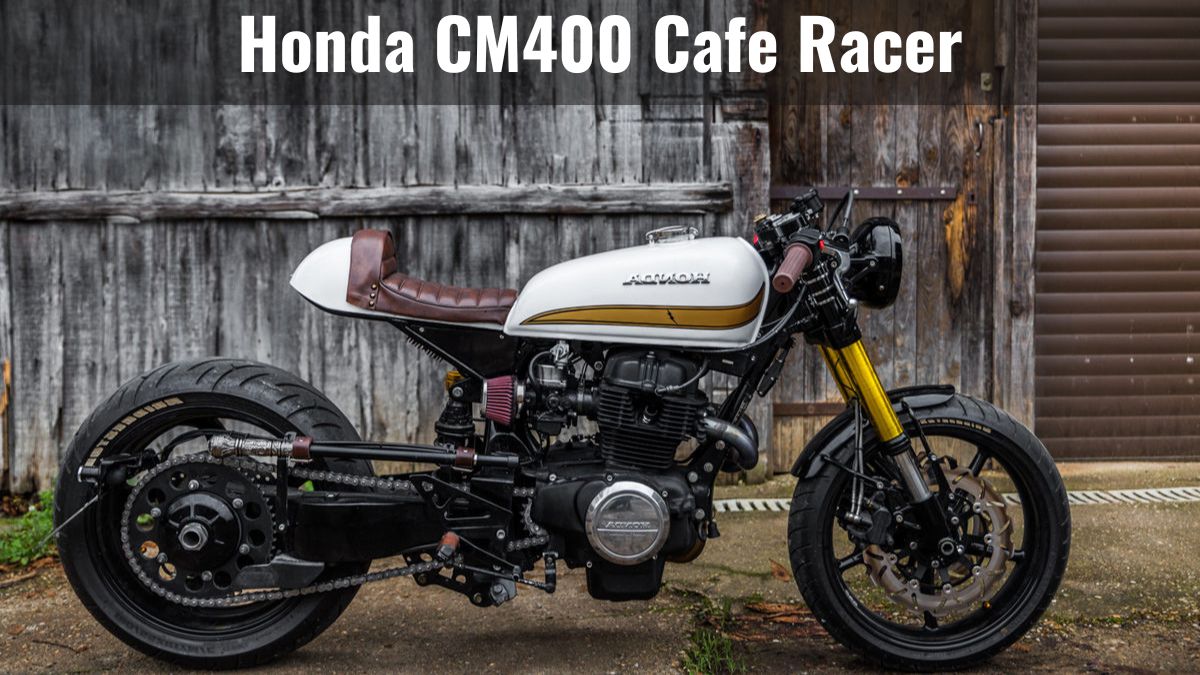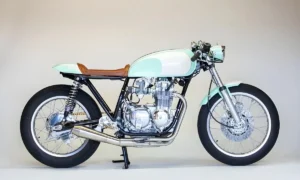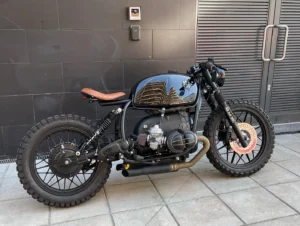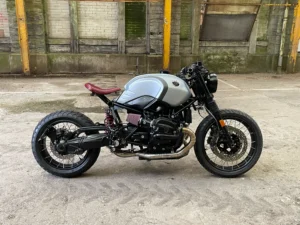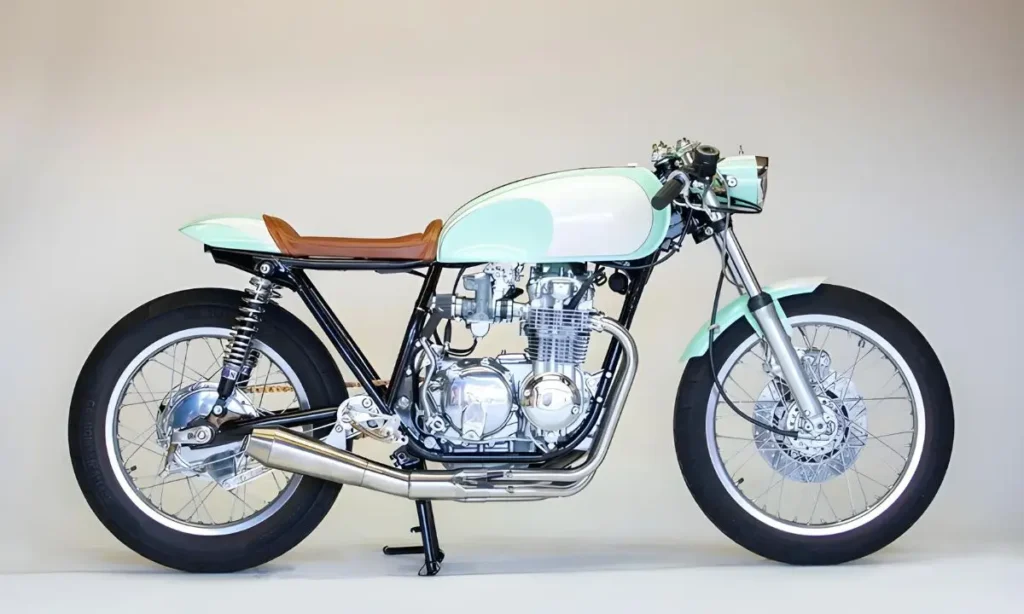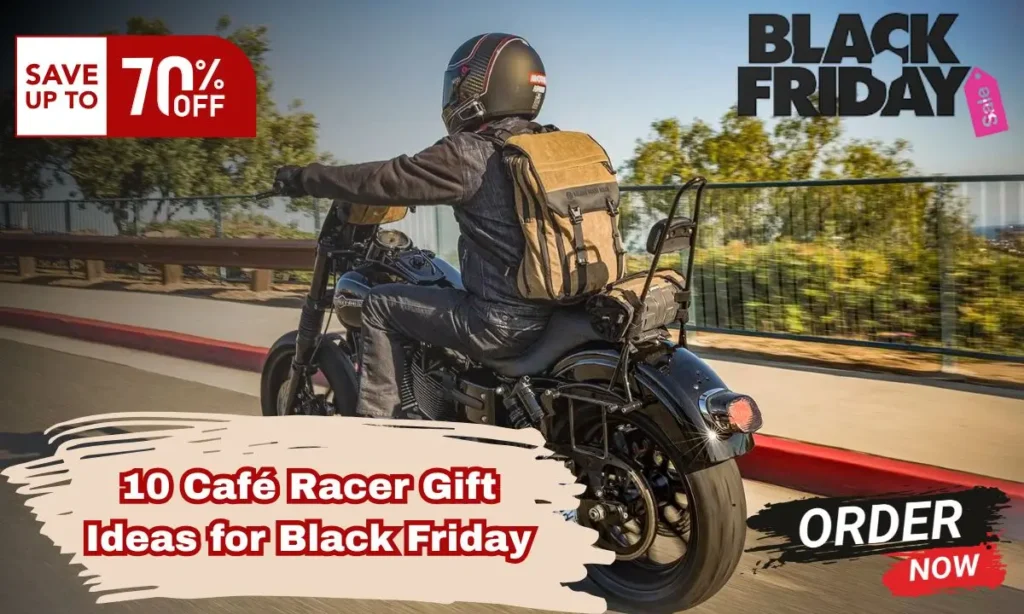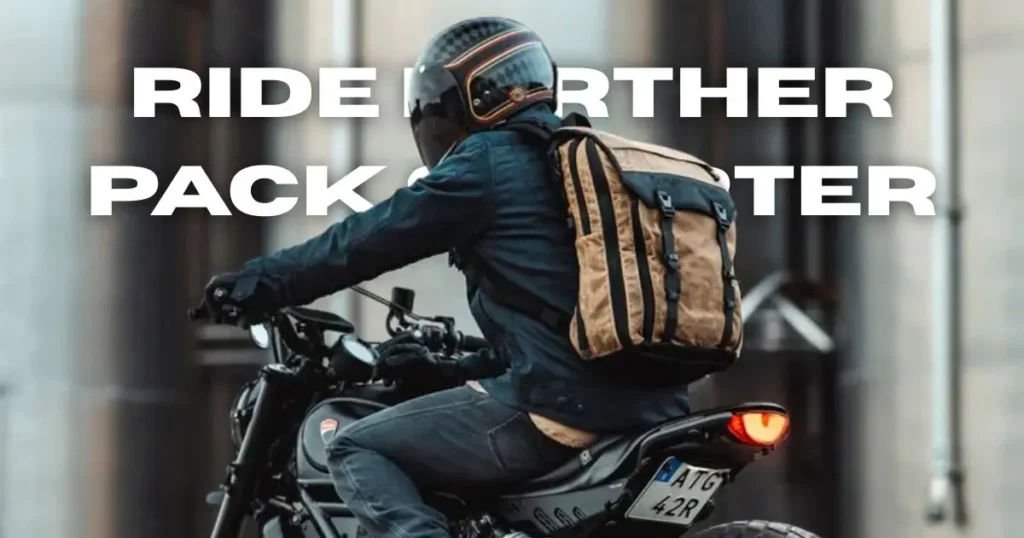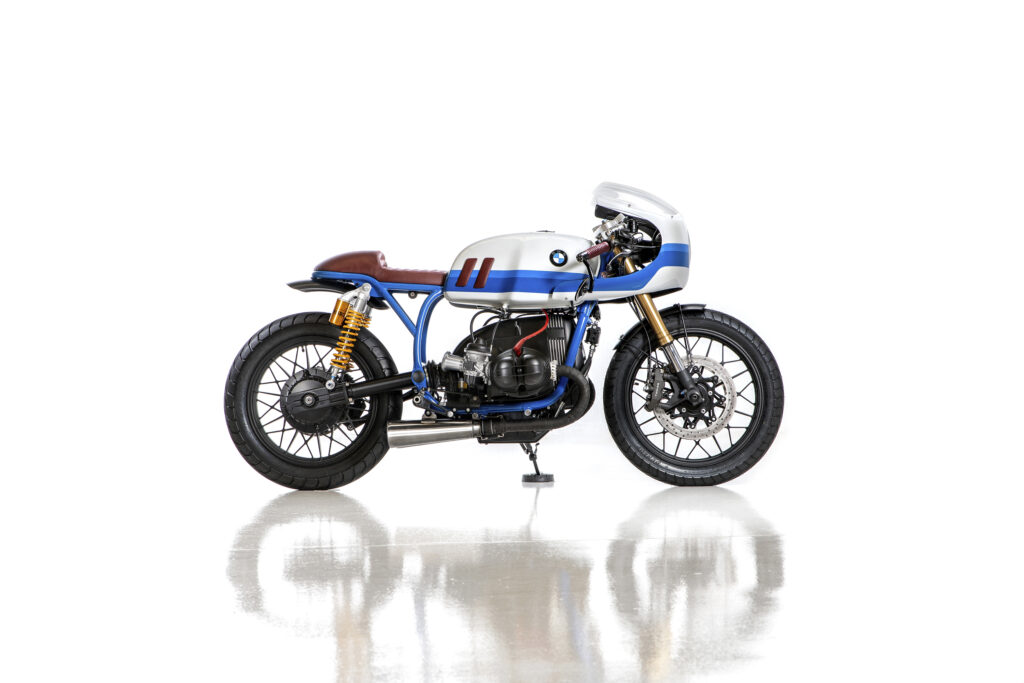Table of Contents
ToggleWhen I first found the Honda CM400, I didn’t think it would be the best choice for a cafe racer project. But the more I looked into it, the more I saw its potential. The Honda CM400, made from 1979 to 1982, is known as a simple, reliable, beginner-friendly bike. But don’t let its simplicity trick you. For people who love cafe racers and want to build their own, the CM400 is a great option.

Why? Because it’s cheap, easy to find, and simple to work on. It may not have the same appeal as a CB750 or a Norton Commando, but that’s what makes it interesting. This bike lets you get creative. It’s like a blank slate, waiting for you to turn it into something special. Whether you’re experienced or new to custom bikes, the CM400 gives you a nice mix of ease and potential. Plus, its twin-engine design is strong, which means fewer problems as you work on making it both look and ride just the way you want.
So, why talk about the Honda CM400? Because it needs more attention. If you’re thinking of building a cafe racer, this could be the perfect base for you. Let’s dive into what you need to know about turning a simple Honda CM400 into a show-stopping cafe racer.
History of the Honda CM400
Let’s go back in time for a moment. The Honda CM400 came out in 1979 and was made until 1982. It was part of Honda’s mid-sized bikes and was a popular choice for beginners and commuters. The goal wasn’t to create a fast, flashy bike. Instead, Honda wanted a reliable, easy-to-ride bike for everyday use.

The CM400 was based on Honda’s older CB series but had some key differences. One big change was the design, which was more like a cruiser compared to the sportier CB models. The flat seat, wide handlebars, and upright seating made it comfortable for long rides. However, it wasn’t known for style—especially compared to modern cafe racers.
But this simplicity is what makes the CM400 great for custom builds. Its basic design gives builders a lot of room to turn it into a cafe racer. The frame isn’t aggressive, but it allows for creative changes, which we’ll cover later. The engine is a 395cc SOHC parallel-twin that produces about 39 horsepower. It’s not very powerful, but it’s enough for smooth rides. Plus, the engine is easy to work on and known for being strong. This makes the CM400 a good project bike for both new and experienced builders.
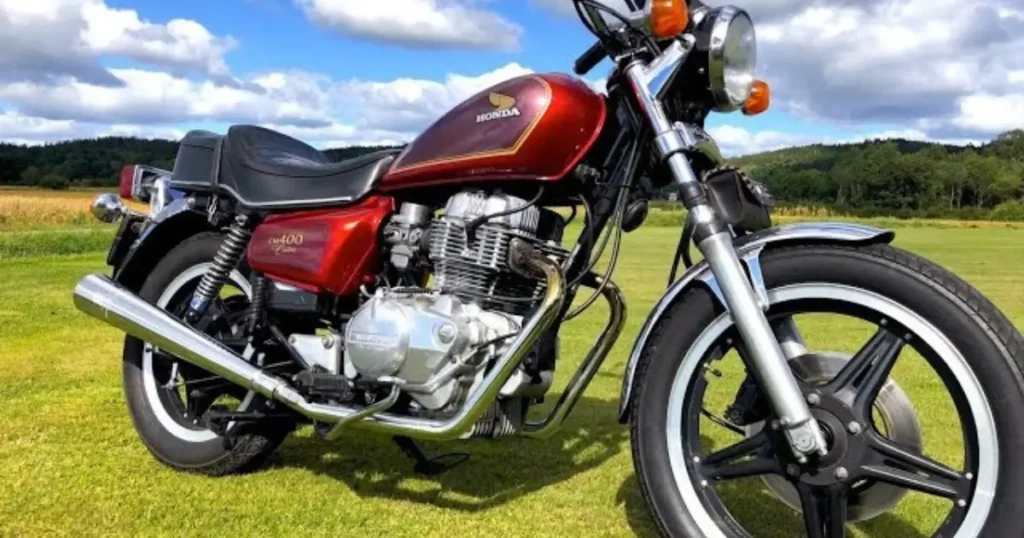
Back then, Honda marketed the CM400 as a middle option between smaller 250cc bikes and bigger 500cc bikes. Because of this, the CM400 was overlooked in favor of other models like the CB550 or CB750. But today, people are starting to see its untapped potential.
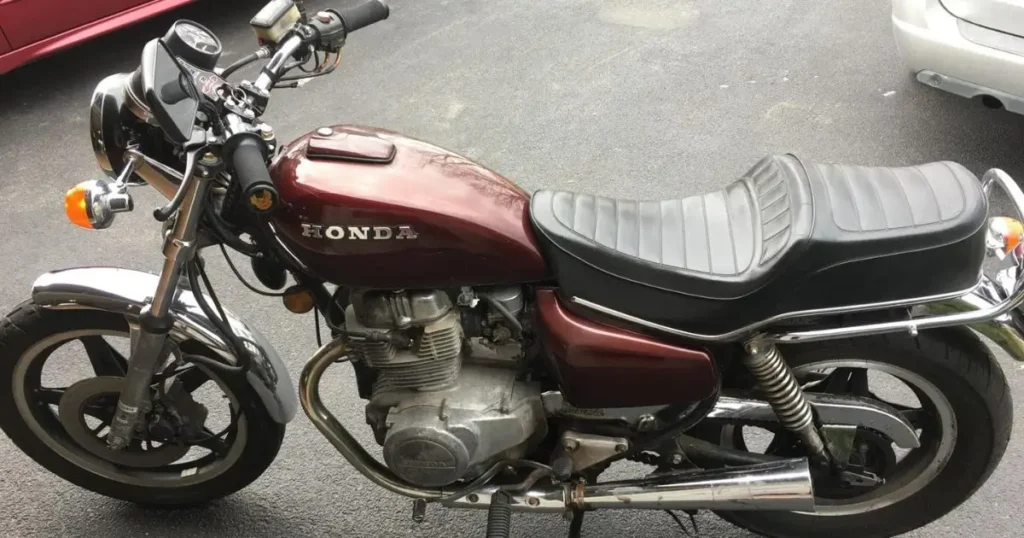
Even more interesting, the CM400’s value has gone up over time, especially in the custom bike scene. It’s still affordable compared to other vintage bikes. And because it’s easy to find in good condition, it’s a great choice for anyone looking to start a custom project without spending too much.
In the next section, we’ll look at the key features of the Honda CM400 and why it’s an underrated option for cafe racer builds.
Key Features and Specs of the Honda CM400
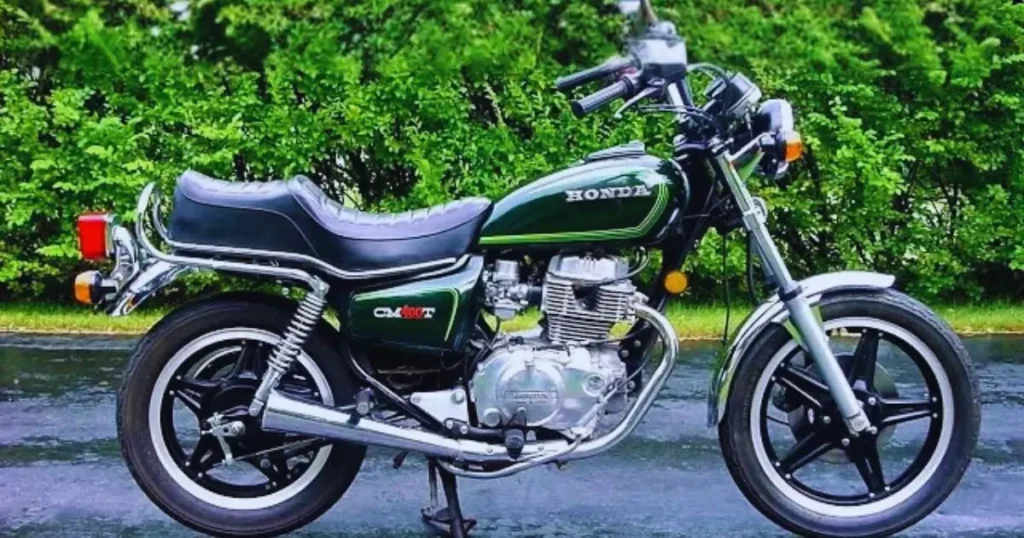
The Honda CM400 doesn’t stand out at first, but don’t let that trick you. Under its simple look is a strong bike that can do more than you think. Whether you’re turning it into a cafe racer or fixing it up to its original form, the CM400 gives you a good base to start with. Let’s look at the key features that make this bike a hidden gem for custom builders.
Engine & Powertrain
- Engine Type: 395cc SOHC parallel-twin engine.
- Horsepower: 39 HP at 8,500 RPM.
- Torque: 23 lb.-ft. at 6,500 RPM.
- Transmission: 5-speed manual transmission with chain drive (some models like the CM400A had a 2-speed automatic option).
- Fuel Delivery: Twin carburetors (often upgraded in custom builds).
The CM400’s engine is a top choice for custom builders. It’s reliable, easy to work on, and very strong. While it won’t win races, the engine is great for a light cafe racer. The focus is on handling and style, not power. Plus, the engine is simple with no complicated electronics, so it’s easy to change.
Chassis & Suspension
- Frame: Steel tubular frame.
- Front Suspension: Telescopic front fork.
- Rear Suspension: Dual shocks.
- Brakes: Front disc brake, rear drum brake (the front disc is often upgraded in cafe racer builds).
- Wheels: 18-inch front wheel and 16-inch rear wheel with ComStar rims (which many builders powder-coat or replace entirely).
The steel frame is both good and bad. It’s strong and long-lasting, which is great for customizing. But it doesn’t have the sharp lines of a CB750. With some changes, like cutting the subframe or adding a new rear loop, you can turn the CM400 into a sleek cafe racer. Builders often upgrade the suspension and brakes to improve the bike’s performance.
Dimensions & Weight
- Weight: 392 lbs (dry weight).
- Seat Height: 30 inches (makes it relatively low and accessible for most riders).
- Fuel Capacity: 3.2 gallons.
The CM400’s size makes it easy to handle for both new riders and experienced builders. Its lighter weight, compared to bigger bikes like the CB750, makes it agile and simple to control.
Key Features That Make the CM400 a Great Cafe Racer Platform
- Simplicity: No electronics or complex components, which makes it a straightforward build.
- Affordability: Often more affordable than other popular cafe racer bases, leaving more budget for custom parts and modifications.
- Availability of Parts: While aftermarket parts for the CM400 are limited, the availability of used parts from other Honda models makes customization easier. Many builders swap components like the carburetors or forks from compatible models.
Engine Performance and Upgrades
One thing to note about the CM400’s engine is that it’s highly tunable. You can keep it stock if you want reliability, but many builders opt for performance upgrades. These can include:
- Exhaust Upgrades: Swapping out the stock exhaust for a custom or aftermarket exhaust improves both performance and the bike’s cafe racer look.
- Carburetor Tuning: Many custom builders clean up or replace the carburetors to improve throttle response.
- Pod Filters: A common modification in cafe racer builds, adding pod filters to the CM400 allows for better airflow and a sleeker design by removing the bulky airbox.
In the next section, we’ll look at why the Honda CM400 is such a great choice for cafe racer conversions and what kind of modifications can be done to turn this humble machine into a true head-turner.
Why the CM400 Makes a Great Cafe Racer Base

The Honda CM400 is one of those bikes that often flies under the radar, especially when compared to the more popular CB series or high-end motorcycles like the Triumph Bonneville. But if you’re looking to build a cafe racer, the CM400 has some distinct advantages that make it worth considering, even if it’s not the flashiest bike in the world.
So, why does this bike work so well as a base for a cafe racer build? Let me walk you through it.
1. Affordable and Accessible
One of the biggest reasons the CM400 is a fantastic cafe racer platform is its affordability. Since it’s not as high in demand as some other classic Honda bikes, you can often find a CM400 in decent condition at a reasonable price. You don’t have to break the bank just to get a project bike, which leaves more room in your budget for custom parts and modifications. And let’s be honest: building a custom cafe racer can quickly add up, so starting with a bike that won’t cost a fortune is a major plus.
2. Simple, Reliable Mechanics
The CM400’s mechanical simplicity is another point in its favor. With its air-cooled, SOHC, parallel-twin engine, this bike is refreshingly easy to work on. There’s no complicated electronics or extra bells and whistles to worry about, so most of your energy can go into the fun stuff—like design and modifications—rather than struggling with finicky modern technology. This simplicity also makes it easier to troubleshoot any issues, whether it’s cleaning the carburetors, tuning the exhaust, or swapping out parts.
The engine itself is known for being tough and reliable. The 395cc twin-cylinder may not blow you away with horsepower, but it’s a dependable workhorse that will keep running for miles and miles as long as you take care of it. This reliability is particularly important for those building a cafe racer, where the bike’s stripped-down look needs to be paired with functionality. After all, a cafe racer is as much about how the bike rides as it is about how it looks.
3. Customization Potential
If there’s one thing that makes the CM400 stand out in the cafe racer world, it’s how customizable it is. The frame, while not as sporty as some, offers enough flexibility for builders to shape it into something that fits the cafe racer aesthetic. Whether you’re cutting down the subframe to create a sleeker rear end or swapping out the handlebars for clip-ons, this bike allows for plenty of modifications without being overly complicated.
Some of the most common modifications include:
- Subframe Modifications: Builders often cut and reshape the subframe to give the bike that signature cafe racer look with a shorter, more aggressive stance.
- Handlebars and Seat: Swapping the stock handlebars for clip-ons and installing a custom seat completely transforms the riding position and overall appearance.
- Exhaust and Intake: Custom exhausts and pod filters are popular upgrades that not only improve performance but also enhance the stripped-down, minimalist aesthetic that cafe racers are known for.
4. Plenty of Parts Availability
While the CM400 may not have as many aftermarket parts specifically made for it as some other models, many components from other Honda bikes are interchangeable. This gives builders a lot of flexibility in sourcing parts. For example, you can easily swap in parts from the CB series for things like suspension, wheels, and even engines in some cases.
Additionally, the CM400’s compatibility with a wide variety of aftermarket parts (like exhausts, seats, and lighting) means you can really make the bike your own without being limited by the factory specs. Whether you want to go full custom with a handmade tank and tail or keep things simple with bolt-on mods, the CM400 gives you room to play.
5. Manageable Size and Weight
At around 390 pounds, the CM400 is relatively lightweight, especially compared to larger bikes like the CB750. This makes it easier to handle, both in terms of riding and when you’re working on it in the garage. A lighter bike is also more agile on the road, which fits right into the cafe racer ethos of building fast, nimble machines that can carve through city streets.
Its compact size and low seat height make it accessible for a wider range of riders. Whether you’re a beginner looking for your first custom project or an experienced builder looking for something easy to modify, the CM400’s manageable size works in your favor.
Step-by-Step Guide to Building a Honda CM400 Cafe Racer
So, you’ve decided to take the plunge and transform a Honda CM400 into a cafe racer. Whether you’re a seasoned builder or a complete newbie, the process can be incredibly rewarding. Here’s a step-by-step guide to help you through the transformation. From mechanical overhauls to design decisions, this guide covers everything you need to know.
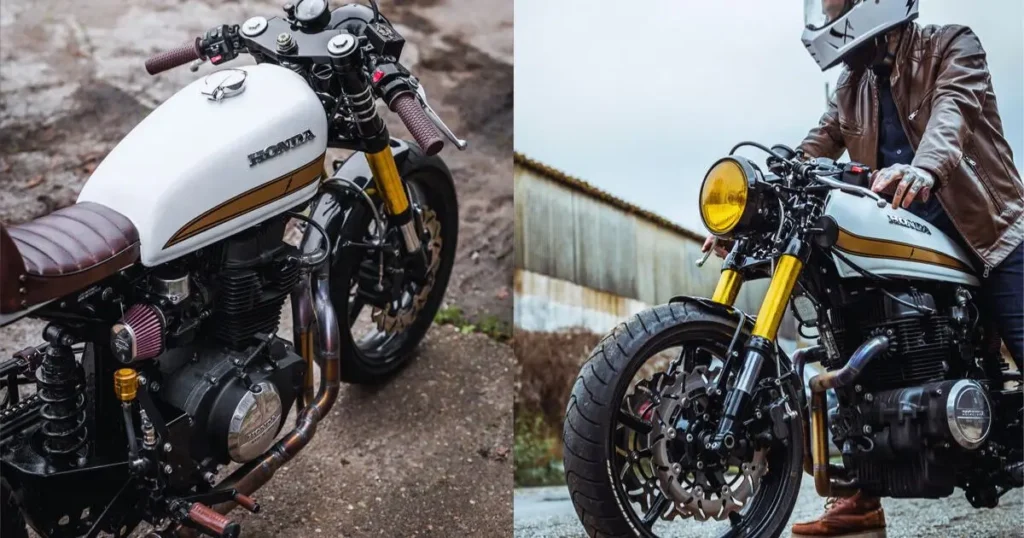
Step 1: Initial Mechanical Overhaul
Before you even think about style and aesthetics, it’s essential to get the bike running well. The last thing you want is to invest time and money into a beautiful build, only to have it sitting in your garage because it won’t run. Start with a full mechanical inspection, paying particular attention to:
- Engine: Check for oil leaks, compression levels, and any signs of wear. If necessary, give the engine a thorough cleaning or rebuild. This includes checking the timing chain, valves, and replacing old gaskets. A compression test will tell you a lot about the health of the engine, and it’s a must before moving forward.
- Carburetors: Clean or rebuild the carbs. Gummed-up or improperly adjusted carbs are one of the most common issues with older bikes, especially if the bike has been sitting unused for a while.
- Electrical System: Test the battery, ignition system, and wiring. Make sure everything is functioning properly. Replace any old wiring, fuses, or connectors as needed.
- Brakes: Ensure the brakes are in good working condition. If they feel weak or worn, consider upgrading the front disc brake and inspecting the rear drum brake.
At this stage, you’re not focusing on aesthetics—your goal is to make sure the bike runs as well as it possibly can.
Step 2: Subframe and Frame Modifications
Once your CM400 is running smoothly, it’s time to get creative. One of the most defining aspects of a cafe racer is its sleek, minimalist frame, so this is where you’ll really start transforming the bike.
- Cutting the Subframe: To achieve the cafe racer’s signature low, flat line from the tank to the rear, you’ll need to modify the subframe. This typically involves cutting off the rear section of the frame and replacing it with a custom rear loop that fits a cafe racer seat.
- Welding and Fabrication: If you’re comfortable with welding, this is where you can fabricate custom brackets for things like the seat, rearsets, and battery box. If welding isn’t your thing, many builders choose pre-made kits that come with a rear loop and mounting brackets.
- Battery Relocation: For a cleaner look, many cafe racer builders relocate the battery under the seat. Some even use smaller, modern batteries like lithium-ion options, which are more compact and easier to hide.
Step 3: Handlebars and Controls
One of the easiest ways to give your CM400 the cafe racer look is by swapping the stock handlebars for clip-ons or clubman bars. This modification not only changes the aesthetic but also alters the riding position, bringing you into a more aggressive, forward-leaning stance.
- Clip-Ons: These are the go-to for cafe racers. They clamp directly onto the fork tubes and give the bike that iconic low-slung look.
- Clubman Bars: These are an alternative to clip-ons if you want a similar look but without the need for major adjustments to the controls.
- Upgrading the Controls: While you’re at it, consider upgrading the levers, throttle, and grips. Many builders opt for vintage-style grips that complement the cafe racer aesthetic.
Step 4: Seat and Tail Section
A sleek, minimalist seat is a signature feature of any cafe racer, and the Honda CM400 is no exception. After modifying the subframe, you’ll need to install a custom seat that fits the new shape.
- Cafe Racer Seat: There are plenty of pre-made cafe racer seats available, or you can go custom. A fiberglass or metal cowl often completes the rear of the bike, giving it that distinctive cafe racer look.
- Custom Upholstery: Don’t forget to have fun with the seat’s material and design. Leather or suede are popular options, and you can choose stitching that adds a unique touch to your build.
Step 5: Exhaust and Intake Upgrades
For both performance and aesthetics, upgrading the exhaust and intake systems is a must for any cafe racer build.
- Custom Exhaust: Many builders opt for a 2-into-1 exhaust setup, which gives the bike a cleaner look and enhances the exhaust note. You can go for stainless steel, chrome, or even wrap the pipes with heat tape for that classic cafe racer vibe.
- Pod Filters: Ditch the bulky airbox and replace it with pod filters. This not only simplifies the bike’s design but also improves airflow, especially when paired with re-jetted carburetors.
Step 6: Wheels and Tires
Cafe racers usually feature more aggressive-looking tires that improve both performance and aesthetics.
- Tires: You’ll want to swap out the stock tires for something more cafe racer appropriate. Many builders choose vintage-style tires like Avon Roadriders or modern performance tires depending on the riding they plan to do.
- Powder-Coating the Wheels: Some builders also take the opportunity to powder-coat the stock ComStar wheels or replace them entirely with spoke wheels for a more vintage look.
Step 7: Final Touches
At this point, you’ve done most of the heavy lifting, but there are a few final touches that will really make your Honda CM400 cafe racer stand out.
- Lighting: Swap the bulky stock headlight for a smaller, vintage-style headlight. Don’t forget to upgrade the taillight and turn signals to something more minimalist.
- Paint and Finish: The paint job is one of the most personal aspects of a custom build. Whether you go for a classic monochrome look or something more eye-catching, a fresh coat of paint will pull the whole build together.
- Speedometer and Electronics: Cafe racers often ditch unnecessary gauges for a cleaner look. A single minimalist speedometer or tachometer is usually all you need. You can also hide any remaining wiring to keep things tidy.
Real-life Honda CM400 Cafe Racer Builds for Inspiration
One of the best ways to jump-start your own Honda CM400 cafe racer project is to look at what others have done. Real-world builds provide a ton of inspiration and can help you see the potential that lies within this often-underestimated bike. Here are some standout Honda CM400 cafe racer builds that illustrate just how transformative a little creativity (and elbow grease) can be.
1. Marco’s Honda CM400 Cafe Racer
Marco, a tattoo artist and custom bike enthusiast, took a 1981 Honda CM400 and transformed it into a stunning cafe racer that is both stylish and functional. What’s remarkable about this build is the attention to detail and craftsmanship involved. Marco and his friend started with a full mechanical overhaul of the bike, making sure the engine was running perfectly before moving on to aesthetics.
Key features of this build include:
- Single-sided swingarm from a VFR 800, which gives the rear end a unique and aggressive look.
- Custom fiberglass rear cowl paired with a hand-stitched leather seat, showcasing Marco’s skill and attention to detail.
- Frankenstein forks made from a combination of Honda and Triumph parts, which were modified to improve handling and accommodate the cafe racer’s riding position.
Marco’s build is a great example of how you can mix and match parts from different motorcycles to create a one-of-a-kind ride. It also highlights the importance of starting with a solid mechanical base before getting into the custom work.
2. 1981 Honda CM400T Cafe Racer by Chance Moto
This particular build started with a worn-down CM400 that had been sitting under a tarp for years. The guys at Chance Moto didn’t let that discourage them, though. They saw the potential and went to work turning this neglected bike into a showstopper.
Some standout modifications include:
- Exhaust Upgrades: After dealing with a leaky exhaust, they swapped it for a custom setup and wrapped the pipes for that classic cafe racer look.
- Wet Sanding and Refinishing: To bring the engine and tank back to life, they wet sanded the old layers of paint and applied a fresh metallic orange coat with a clear sparkle finish.
- Clubman Bars: These were installed to give the bike a lower, more aggressive riding position, which is essential for the cafe racer style.
This build is a testament to how a little elbow grease and determination can turn a junker into a head-turning custom cafe racer.
3. Gulf Racing-Themed Honda CM400
A particularly eye-catching CM400 cafe racer comes from a builder who took inspiration from the iconic Gulf Racing colors. This 1981 CM400T was transformed with a bright orange-painted frame and light blue bodywork, complete with Gulf logos, making it stand out from the crowd.
Key features include:
- Custom Tail Section: Featuring a black bump seat and a clean, minimalistic rear end.
- Heat-Wrapped Exhaust: A signature feature of many cafe racers, adding to the bike’s vintage aesthetic.
- ComStar Wheels: Powder-coated black, with new Kenda Challenger tires fitted for improved grip and a more aggressive look.
This build shows how a bold color scheme can transform the entire look and feel of the bike while staying true to the cafe racer’s minimalist design ethos.
4. Custom CM400 by Retro Moto
This build by Junior from Retro Moto is another excellent example of how much customization potential the CM400 has. Junior’s build featured a number of hand-fabricated parts, which gave the bike a totally unique appearance.
Notable customizations include:
- Hand-formed Steel Tank: Junior took inspiration from vintage Italian race bikes to create a one-of-a-kind fuel tank that complements the bike’s aggressive lines.
- Under-tail Exhaust: With the help of a couple of friends, Junior built a custom under-tail exhaust that gives the bike a cleaner, more streamlined look.
- Custom Rearsets and Controls: Built from repurposed parts, including an old oil pump and a pocket bike transmission, the rearsets contribute to the bike’s unique character and riding position.
Junior’s attention to detail and commitment to building as many parts as possible by hand is what sets this build apart. It’s a reminder that you can inject a lot of personal creativity into your project if you’re willing to think outside the box.
5. Forum Build by a DIY Enthusiast
Another great source of inspiration comes from motorcycle forums, where everyday builders share their progress and challenges. One particular CM400 build, shared on a cafe racer forum, is a perfect example of what you can accomplish on a budget.
Highlights of this build include:
- Budget-friendly Upgrades: The builder focused on low-cost upgrades, like cleaning the carbs and replacing the battery, to get the bike running before moving on to aesthetics.
- Frame Work: After cutting the subframe and fabricating a custom rear loop, the builder installed a cafe racer seat and swapped the handlebars for clip-ons.
This project is a great example for beginners who might feel intimidated by more elaborate builds. It shows that with some patience and determination, you can create a fantastic cafe racer even if you’re working with limited resources.
Common Challenges and Solutions in Building a Honda CM400 Cafe Racer
Building a cafe racer from a Honda CM400 can be one of the most satisfying projects a motorcycle enthusiast can take on. But, like any custom build, it’s not without its challenges. From mechanical issues to sourcing parts, there are a few hurdles you might encounter along the way. The good news? These challenges are well-documented, and with a little preparation, you can avoid most of the common pitfalls. Let’s go over the key challenges you might face and the best ways to tackle them.
Challenge 1: Getting the Engine Running Smoothly
One of the most common issues people run into with older bikes like the CM400 is getting the engine in top condition. Often, these bikes have been sitting unused for years, and while they may look good on the outside, their internal components can be a mess. Carburetor issues, old gaskets, and oil leaks are common problems.
Solution:
- Carburetor Rebuild or Replacement: One of the first things to address on any old bike is the carburetor. Over time, carbs get clogged or gummed up, which can lead to poor performance. You’ll want to either clean and rebuild the existing carbs or, if they’re too far gone, replace them entirely. Be sure to re-jet them if you’re adding pod filters or making significant changes to the intake.
- Check for Oil Leaks: With a bike as old as the CM400, oil leaks are inevitable. Make sure to replace old gaskets, check the seals, and tighten everything up after an engine inspection. A common issue is mismatched bolts on the engine head, which can lead to oil shooting up and out.
- Compression Test: Before diving too deep into modifications, it’s wise to perform a compression test. This will let you know if the rings are worn or if you have any other internal engine issues that need addressing before moving forward.
Challenge 2: Limited Aftermarket Parts
One of the downsides of working with a CM400 is the relative lack of aftermarket parts specifically designed for this model. While there are plenty of universal cafe racer parts available, the CM400 doesn’t have as much direct support as more popular models like the CB750.
Solution:
- Parts Compatibility: Fortunately, the CM400 shares many parts with other Honda models. For example, components from the CB400, CB450, and even the CB750 can often be adapted for use on a CM400. This opens up more options when it comes to finding replacement parts or performance upgrades.
- Custom Fabrication: For those with the tools and skills, custom fabrication can be a great way to get around the limitations of aftermarket parts. Building custom brackets, modifying the frame, or handcrafting parts like the seat cowl or tank can give your build a one-of-a-kind look.
Challenge 3: Frame and Subframe Modifications
The CM400’s frame wasn’t exactly designed with cafe racer aesthetics in mind. The stock subframe can look bulky and out of place, especially if you’re aiming for a sleek, minimalist look. While the frame is sturdy, modifying it to fit your vision can be a bit tricky if you’ve never done this kind of work before.
Solution:
- Cutting the Subframe: If you’re looking to achieve the classic cafe racer silhouette, you’ll likely need to cut the subframe and install a new rear loop. Many builders remove the stock rear section and replace it with a cleaner, more angular loop that fits a cafe racer seat.
- Professional Welding: If you’re not experienced with welding, this is one part of the build where you might want to bring in a professional. A poorly done weld can weaken the frame and cause structural issues down the road. Most custom bike shops can handle this for you at a reasonable cost.
Challenge 4: Sourcing the Right Suspension and Brakes
The stock suspension on the Honda CM400 is adequate, but it’s far from ideal for a custom cafe racer build. Many owners find that the stock shocks and forks are too soft, especially for more aggressive riding. Similarly, the rear drum brake isn’t the most confidence-inspiring option for a custom build.
Solution:
- Suspension Upgrades: One common upgrade is swapping out the rear shocks for a pair of modern adjustable shocks. Brands like Hagon and RFY offer affordable options that significantly improve ride quality. For the front, you can upgrade the fork springs or even swap out the entire front end from a different model like the CB series.
- Brake Upgrades: Upgrading the front brake to a larger disc or a twin-disc setup can provide better stopping power. Many builders also upgrade the brake lines to stainless steel for improved feel and performance.
Challenge 5: Wiring and Electronics
The electrical system on the CM400 is simple but outdated. If you’re adding modern components like LED headlights, digital gauges, or an aftermarket ignition, you may need to overhaul the wiring harness. Older bikes can suffer from brittle wiring or faulty connections that can cause headaches down the line.
Solution:
- Simplified Wiring Harness: Many cafe racer builders opt to simplify the bike’s wiring harness. You can either rewire the bike yourself, using a simplified wiring diagram, or purchase a pre-made harness designed for cafe racers. This not only makes the bike easier to work on but also cleans up the overall look.
- Battery Relocation: For a cleaner aesthetic, consider relocating the battery under the seat or somewhere less visible. Many builders switch to smaller lithium-ion batteries, which are easier to hide.
Cost Breakdown: What to Expect When Building a Honda CM400 Cafe Racer
One of the most important considerations when starting a custom build is the budget. How much will you need to spend to turn a stock Honda CM400 into a cafe racer that not only looks great but also rides well? The truth is, the cost of a project like this can vary widely depending on the condition of the bike, the scope of your modifications, and whether you’re doing the work yourself or outsourcing it to professionals.
Below, I’ll break down the key areas where you’ll likely spend money and provide a rough estimate of what to expect. Remember, these are just ballpark figures, and your costs may vary depending on the specifics of your build.
1. The Bike Itself
The first and most obvious cost is the bike. The good news is that Honda CM400s are relatively affordable compared to other vintage bikes like the CB750 or Triumph Bonneville.
- Cost of a Stock Honda CM400: Depending on the condition, you can usually find a CM400 for anywhere between $800 and $2,500. Bikes in rougher condition will be cheaper but might require more mechanical work, while better-maintained models might reduce your initial mechanical costs.
2. Mechanical Overhaul
Once you have the bike, you’ll need to get it running smoothly before diving into the aesthetics. Even if the bike is in decent shape, it’s a good idea to budget for some level of mechanical work.
- Carburetor Rebuild Kit: $50–$100.
- New Gaskets and Seals: $20–$80.
- Oil Change, Filters, and Fluids: $50–$100.
- Compression Tester and Other Tools: If you don’t already have them, basic diagnostic tools like a compression tester will run you about $20–$50.
If the engine needs a full rebuild, costs can escalate significantly. For a top-end rebuild (valves, pistons, etc.), expect to spend anywhere from $300 to $1,000, depending on whether you do it yourself or take it to a mechanic.
3. Frame and Subframe Modifications
Modifying the frame and subframe is key to achieving the cafe racer look. This typically involves cutting the subframe and adding a new rear loop.
- Rear Loop Kit: $50–$150 (or custom fabrication can run higher).
- Professional Welding: If you’re not doing this yourself, expect to pay about $100–$300 for professional welding services.
4. Suspension and Brakes
Upgrading the suspension and brakes is crucial if you plan to ride your cafe racer frequently. The stock CM400 suspension is adequate, but an upgrade will improve both comfort and performance.
- Rear Shocks: $100–$300 for adjustable aftermarket shocks like RFY or Hagon.
- Front Fork Upgrade: If you’re upgrading the springs or doing a full fork swap, budget $100–$500, depending on the level of work required.
- Brake Upgrades: New front disc brakes, pads, and potentially stainless-steel brake lines can cost $100–$300.
5. Aesthetic Modifications
This is where your personal style comes into play. The look and feel of your bike can vary significantly based on your choices in seats, handlebars, and lighting.
- Clip-on Handlebars or Clubman Bars: $50–$150.
- Cafe Racer Seat: Pre-made seats cost $100–$300, while a custom seat can go higher if you’re having it upholstered or made from scratch.
- Custom Lighting: Swapping out the stock headlight and taillight for a minimalist cafe racer look will cost around $50–$200 for both pieces.
- Paint and Finish: A DIY paint job can be relatively inexpensive—anywhere from $50 to $200 for paint and materials. However, if you want a professional job, especially if you’re looking for a high-end custom finish, it can cost anywhere from $500 to $1,500 depending on the complexity of the design.
6. Exhaust and Intake Modifications
Upgrading the exhaust and intake system is not only great for performance but also a signature part of the cafe racer aesthetic.
- Pod Filters: $50–$100.
- Custom or Aftermarket Exhaust: A full custom exhaust system could cost $200–$600, depending on the materials and design. If you’re just upgrading the mufflers or going for a 2-into-1 setup, expect to spend $100–$300.
7. Miscellaneous Costs
There are always unexpected costs that come up during a build. Whether it’s replacing bolts, buying tools, or dealing with last-minute upgrades, it’s wise to have a budget for these.
- Miscellaneous Budget: Set aside about $200–$500 for unforeseen expenses.
8. Labor Costs (If Outsourced)
If you’re not doing all the work yourself and plan to hire professionals for welding, painting, or mechanical work, labor costs can quickly add up. Here’s a rough idea:
- Mechanic Labor: $50–$100 per hour, depending on your location.
- Fabrication and Welding: $75–$150 per hour for custom work.
Total Estimated Costs
- DIY Build (Minimal Outsourcing): $1,500 to $3,500, depending on the scope of your modifications and whether you start with a bike in good running condition.
- Full Custom Build (With Professional Help): $3,500 to $7,500+ for a more elaborate build with professional labor, custom fabrication, and high-end finishes.
Is the Honda CM400 Right for Your Cafe Racer Project?
After exploring every aspect of turning a Honda CM400 into a cafe racer—from its history and mechanical features to the cost breakdown and potential challenges—you might still be wondering: Is the CM400 the right bike for your custom build?
Here’s my take: If you’re looking for an affordable, reliable platform with plenty of room for customization, the Honda CM400 is a fantastic choice. It may not have the immediate allure of a CB750 or other more popular models, but that’s what makes it so appealing. The CM400 is the underdog in the cafe racer world, offering a perfect balance of simplicity, mechanical reliability, and customization potential.
It’s also a bike that allows for creativity. Whether you’re a first-time builder or a seasoned pro, there’s enough flexibility in the design to allow you to add your own personal touch. From frame modifications to engine upgrades, the CM400 can be as unique as you want it to be.
Who Should Build a CM400 Cafe Racer?
- New Builders: If you’re new to the world of custom bikes, the CM400 is an excellent starting point. Its manageable size, simple mechanics, and relatively low cost make it less intimidating than some other projects.
- Experienced Customizers: If you’ve already built a few bikes, the CM400 offers a blank canvas with plenty of creative potential. The frame may require a bit more work to achieve that classic cafe racer look, but with the right modifications, the results can be stunning.
What to Keep in Mind
- Budget: You can keep the project fairly budget-friendly, but costs can quickly add up if you opt for custom parts and professional services. Plan ahead, prioritize your upgrades, and be realistic about what you can do yourself.
- Time and Effort: Building a cafe racer takes time, especially if you’re making significant modifications to the frame, engine, or suspension. Patience is key—rushing through the process will only lead to headaches later on.
In the end, a Honda CM400 cafe racer isn’t just a bike; it’s a reflection of your creativity, vision, and hard work. Every hour you spend in the garage, every part you install, and every modification you make brings you closer to creating something uniquely yours. Whether you’re going for a clean, minimalist look or a bold, custom design, the CM400 is a platform that will reward your effort.
So, if you’re ready to get your hands dirty, fire up that grinder, and start turning wrenches, the Honda CM400 might just be the perfect bike for your next cafe racer build. Enjoy the ride, and don’t forget—half the fun of owning a custom motorcycle is the process of making it your own.

